Abstract
Variations of the symbolic delayed-matching-to-sample procedure were used to study a pigeon's memory for a small number of pecks. In the first experiment a choice of a left or right sidekey after a delay or retention interval was reinforced if a bird had not pecked at all or had pecked exactly once, before the delay, respectively. In the second experiment a choice of a red or green sidekey, regardless of its position, was reinforced if a bird had not pecked at all or had pecked exactly twice, respectively. In the first experiment a bird could orient toward the correct choice during the delay, whereas it could not in the second experiment. In a third experiment a feature-probing method was used to study a pigeon's memory for a number of pecks in the context of certain other pecks. The results showed that a pigeon can remember a small number of pecks for one-half to one minute or more and that the percent correct is a decreasing function of the log retention interval. When a second number of pecks is different from the first number, memory for the first number lasts only a few seconds. When a second number is the same, memory lasts considerably longer. The more recent number of pecks is remembered better. The results are interpreted in terms of a theory which holds that a reinforcer, in general, may act on a subjects' memory for recent behavior to generate patterns of behavior.
Keywords: short-term memory, symbolic delayed-matching-to-sample, feature probing, bias, memory strength, behavioral patterns, key pecks, pigeons
Full text
PDF
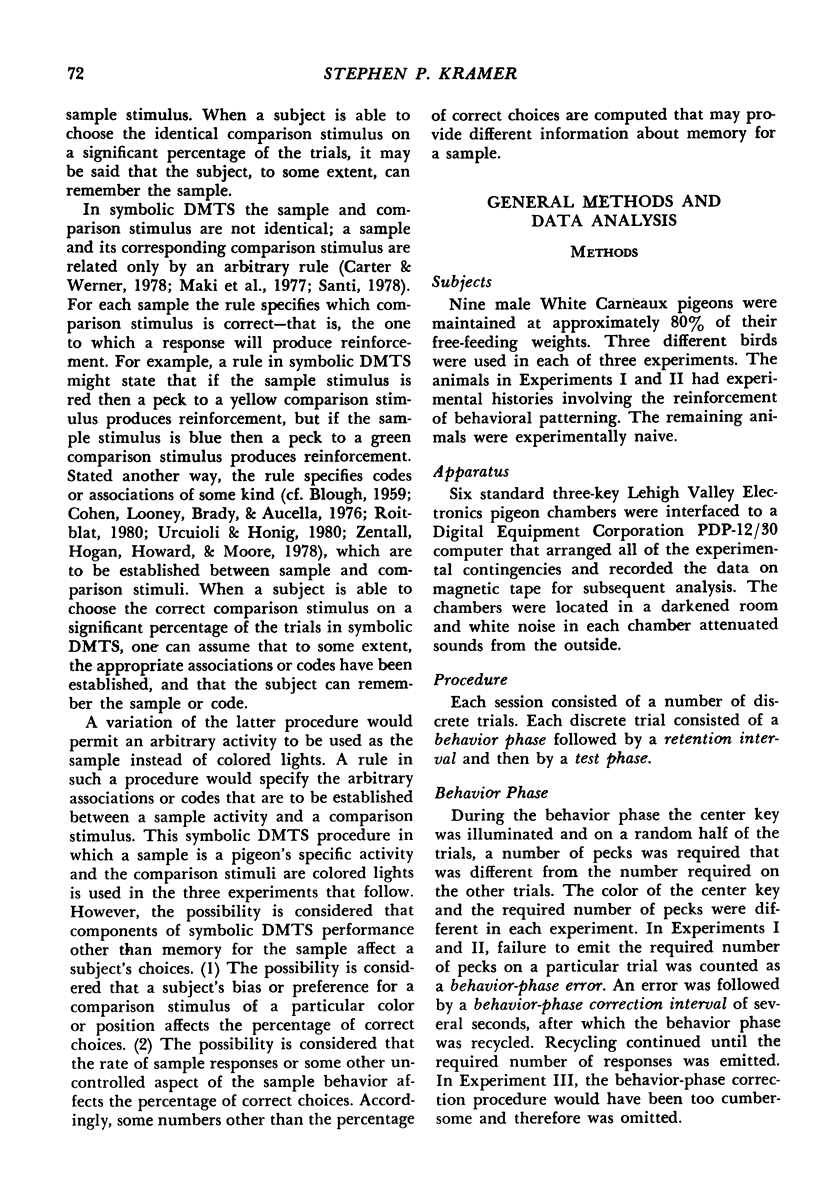
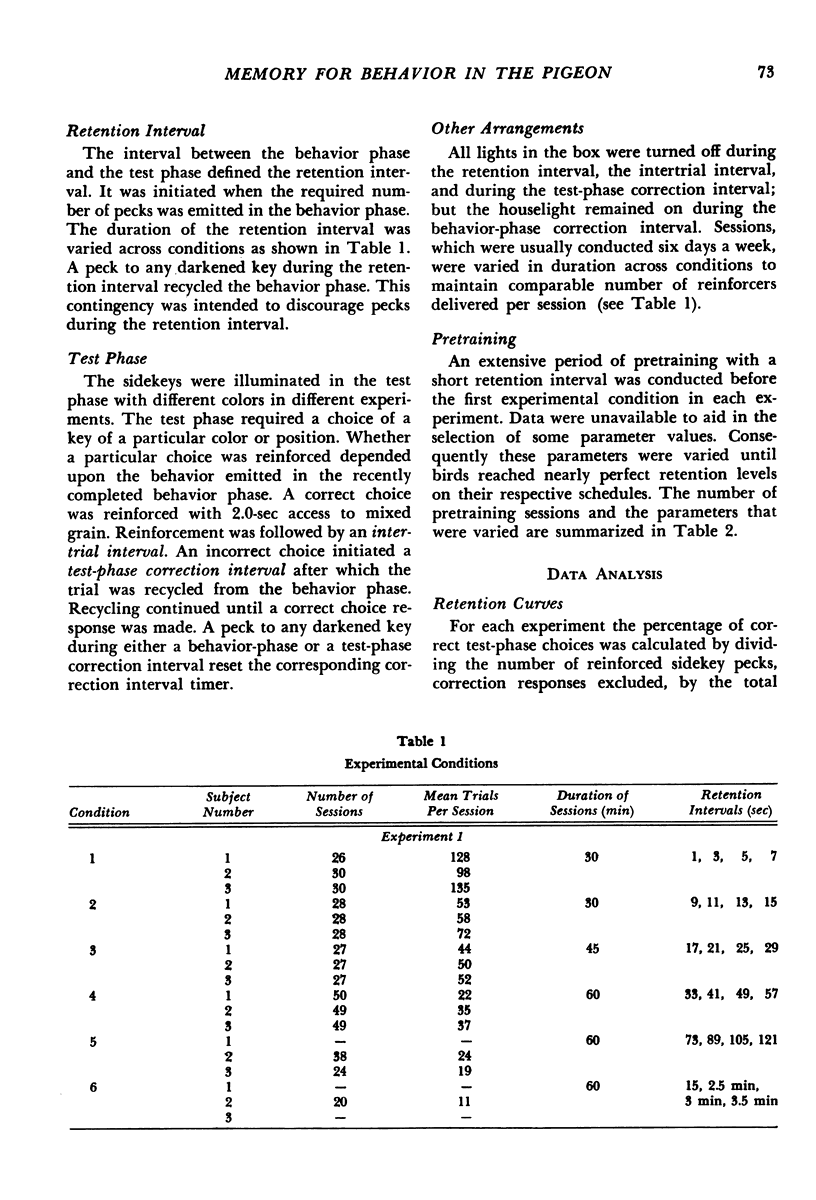

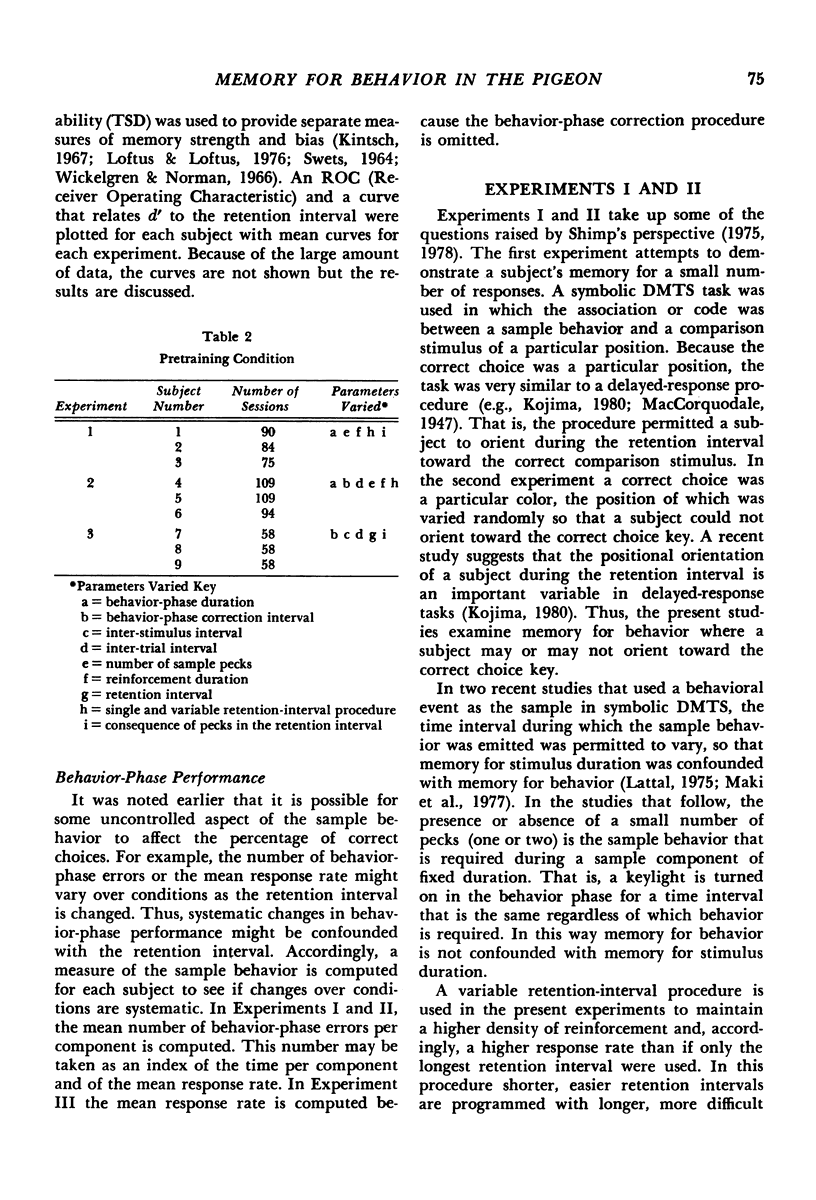
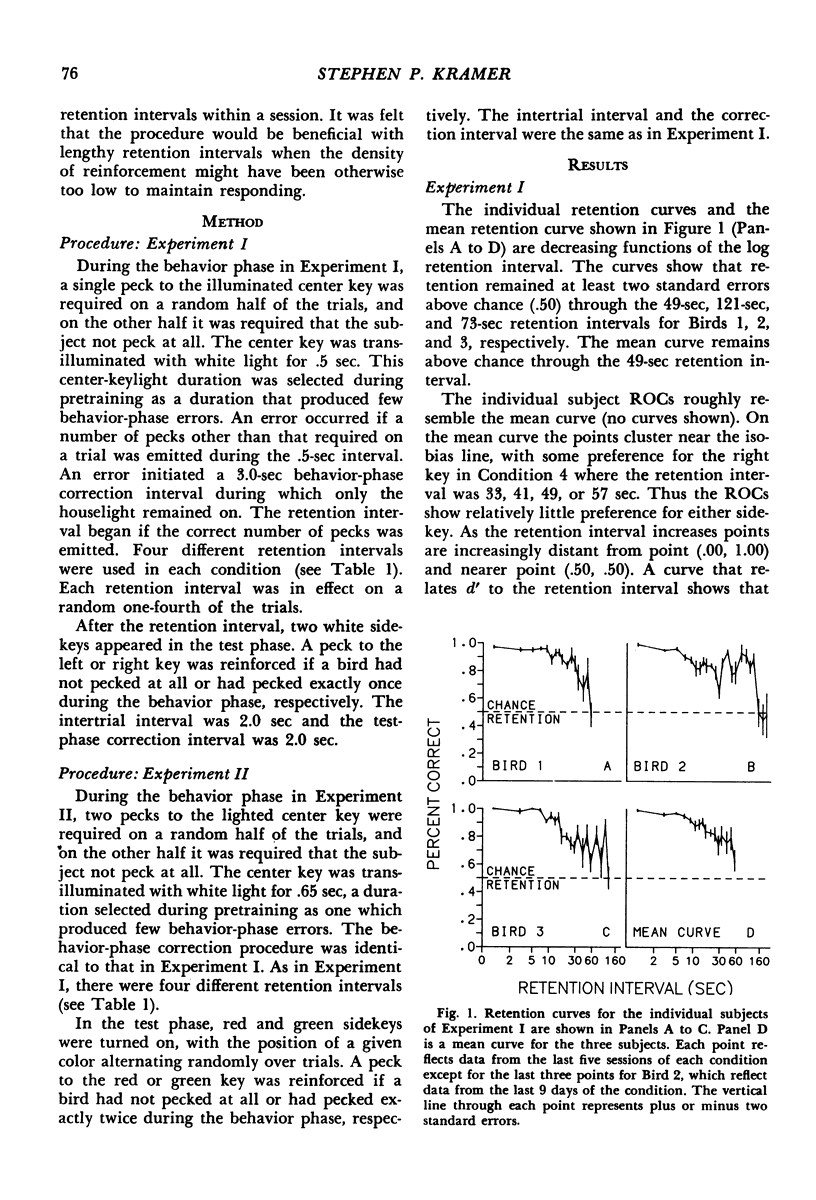


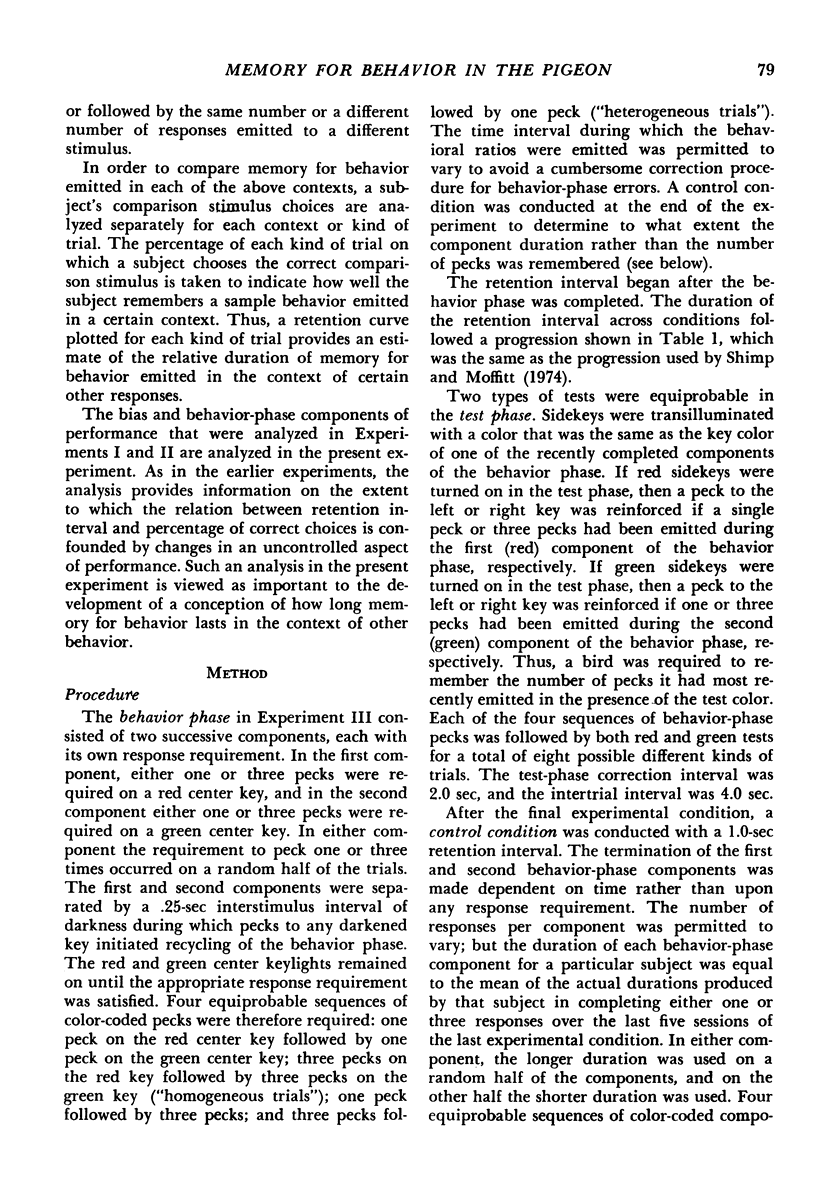
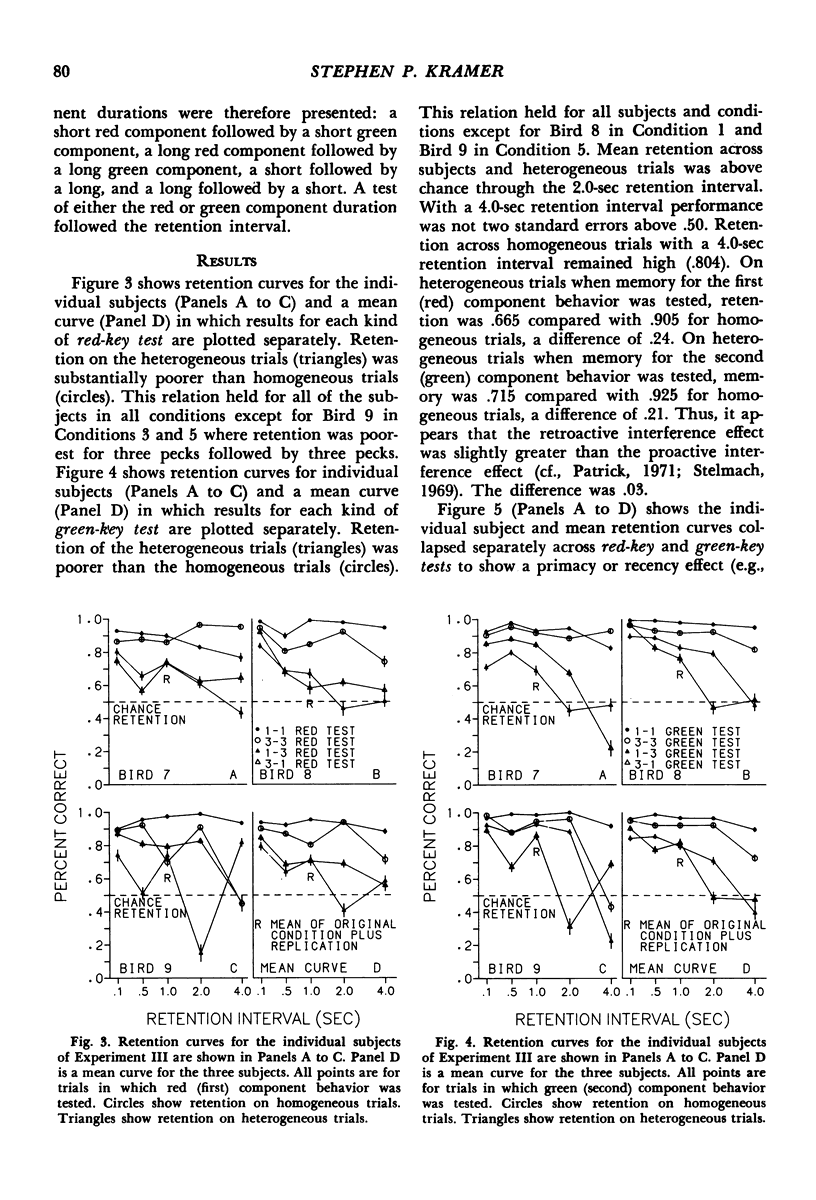
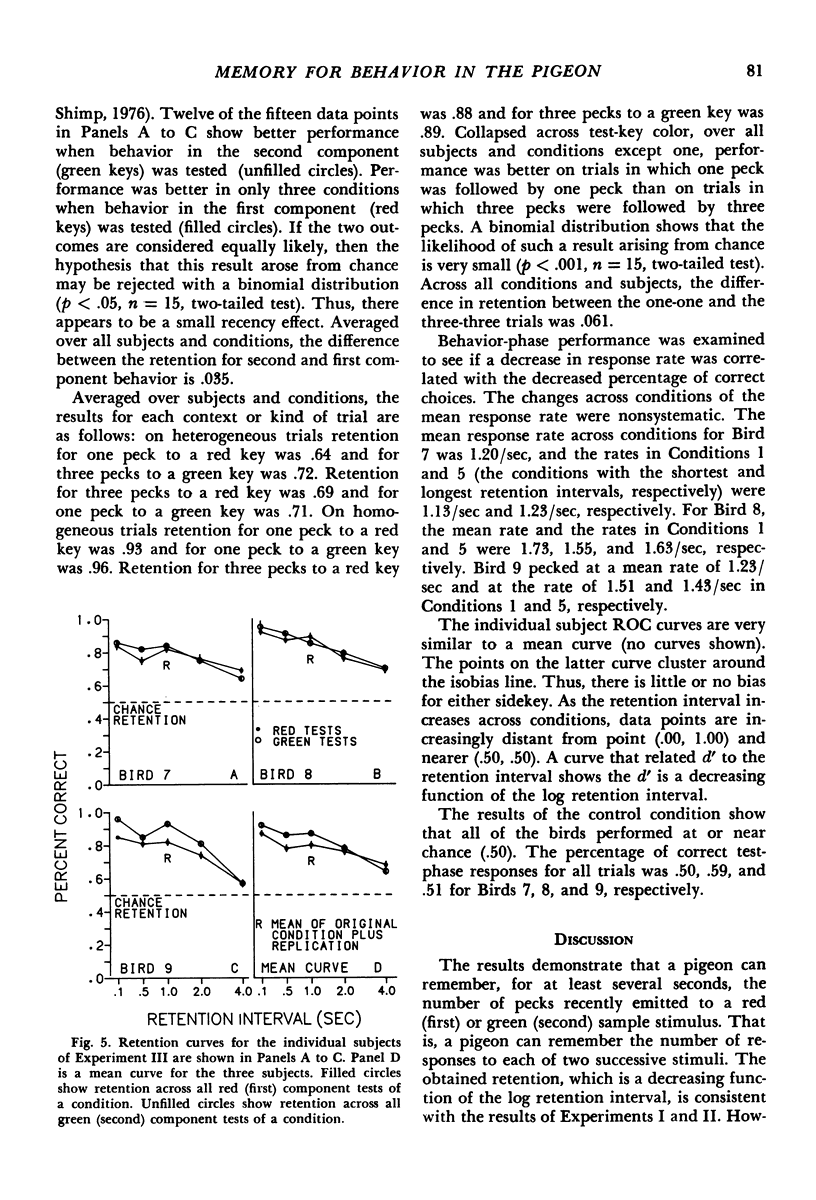


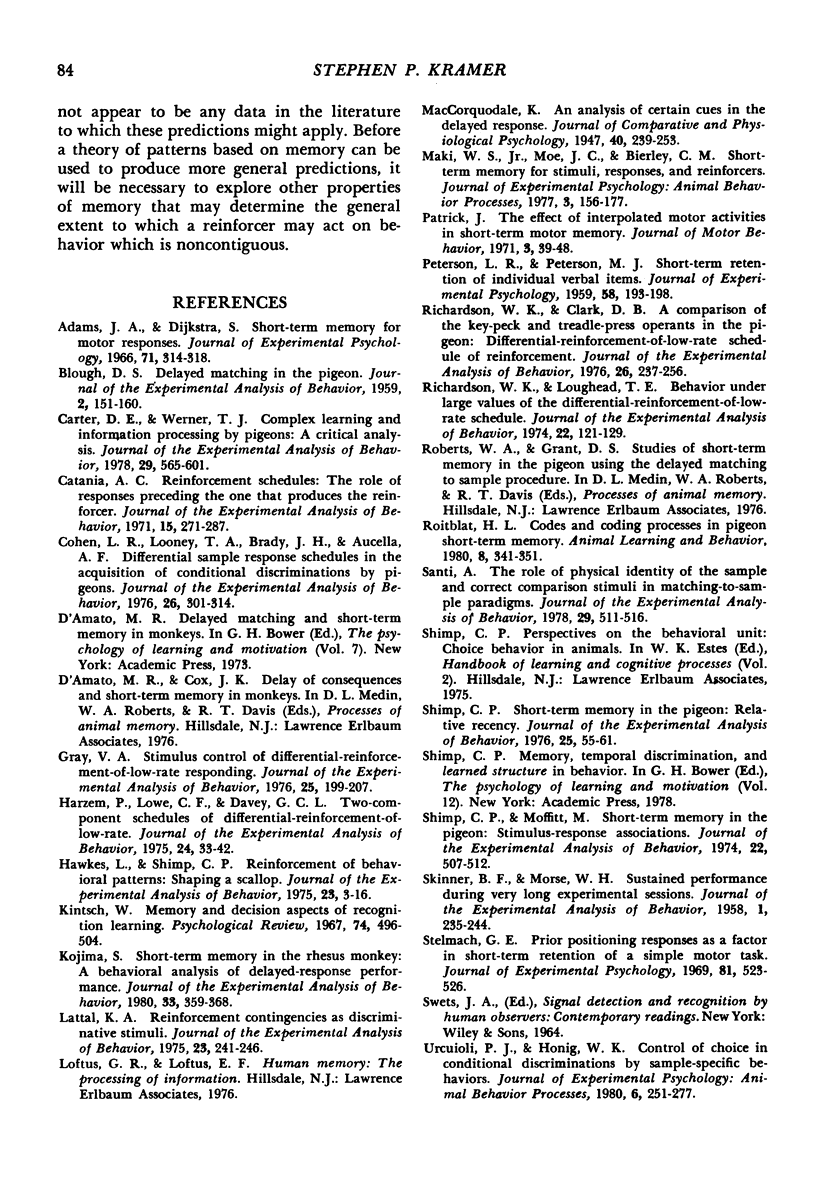
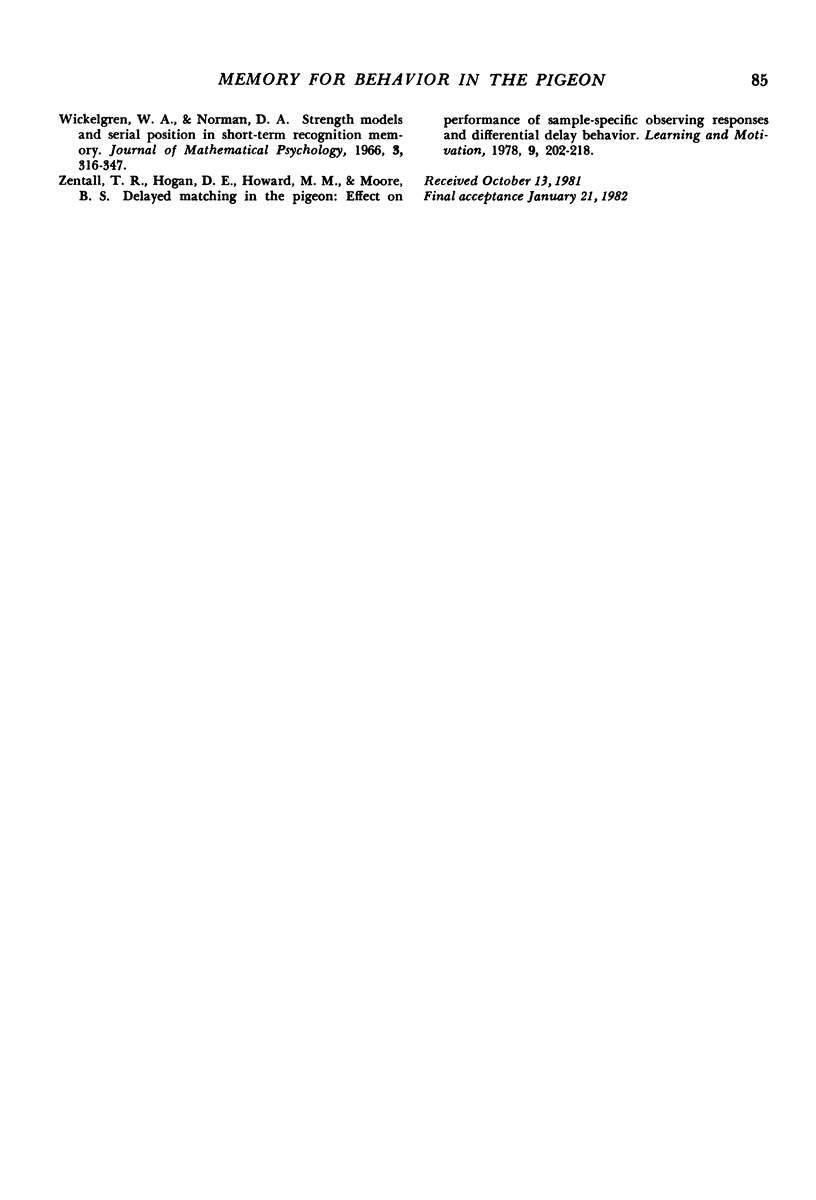
Selected References
These references are in PubMed. This may not be the complete list of references from this article.
- Adams J. A., Dijkstra S. Short-term memory for motor responses. J Exp Psychol. 1966 Feb;71(2):314–318. doi: 10.1037/h0022846. [DOI] [PubMed] [Google Scholar]
- BLOUGH D. S. Delayed matching in the pigeon. J Exp Anal Behav. 1959 Apr;2:151–160. doi: 10.1901/jeab.1959.2-151. [DOI] [PMC free article] [PubMed] [Google Scholar]
- Carter D. E., Werner T. J. Complex learning and information processing by pigeons: a critical analysis. J Exp Anal Behav. 1978 May;29(3):565–601. doi: 10.1901/jeab.1978.29-565. [DOI] [PMC free article] [PubMed] [Google Scholar]
- Catania A. C. Reinforcement schedules: the role of responses preceding the one that produces the reinforcer. J Exp Anal Behav. 1971 May;15(3):271–287. doi: 10.1901/jeab.1971.15-271. [DOI] [PMC free article] [PubMed] [Google Scholar]
- Cohen L. R., Looney T. A., Brady J. H., Aucella A. F. Differential sample response schedules in the acquisition of conditional discriminations by pigeons. J Exp Anal Behav. 1976 Sep;26(2):301–314. doi: 10.1901/jeab.1976.26-301. [DOI] [PMC free article] [PubMed] [Google Scholar]
- Gray V. A. Stimulus control of differential-reinforcement-of-low-rate responding. J Exp Anal Behav. 1976 Mar;25(2):199–207. doi: 10.1901/jeab.1976.25-199. [DOI] [PMC free article] [PubMed] [Google Scholar]
- Harzem P., Lowe C. F., Davey G. C. Two-component schedules of differential-reinforcement-of-low-rate. J Exp Anal Behav. 1975 Jul;24(1):33–42. doi: 10.1901/jeab.1975.24-33. [DOI] [PMC free article] [PubMed] [Google Scholar]
- Hawkes L., Shimp C. P. Reinforcement of behavioral patterns: shaping a scallop. J Exp Anal Behav. 1975 Jan;23(1):3–16. doi: 10.1901/jeab.1975.23-3. [DOI] [PMC free article] [PubMed] [Google Scholar]
- Kintsch W. Memory and decision aspects of recognition learning. Psychol Rev. 1967 Nov;74(6):496–504. doi: 10.1037/h0025127. [DOI] [PubMed] [Google Scholar]
- Kojima S. Short-term memory in the rhesus monkey: A behavioral analysis of delayed-response performance. J Exp Anal Behav. 1980 May;33(3):359–368. doi: 10.1901/jeab.1980.33-359. [DOI] [PMC free article] [PubMed] [Google Scholar]
- Lattal K. A. Reinforcement contingencies as discriminative stimuli. J Exp Anal Behav. 1975 Mar;23(2):241–246. doi: 10.1901/jeab.1975.23-241. [DOI] [PMC free article] [PubMed] [Google Scholar]
- PETERSON L. R., PETERSON M. J. Short-term retention of individual verbal items. J Exp Psychol. 1959 Sep;58:193–198. doi: 10.1037/h0049234. [DOI] [PubMed] [Google Scholar]
- Richardson W. K., Clark D. B. A comparison of the key-peck and treadle-press operants in the pigeon: differential-reinforcement-of-low-rate schedule of reinforcement. J Exp Anal Behav. 1976 Sep;26(2):237–256. doi: 10.1901/jeab.1976.26-237. [DOI] [PMC free article] [PubMed] [Google Scholar]
- Richardson W. K., Loughead T. E. Behavior under large values of the differential-reinforcement-of-low-rate schedule. J Exp Anal Behav. 1974 Jul;22(1):121–129. doi: 10.1901/jeab.1974.22-121. [DOI] [PMC free article] [PubMed] [Google Scholar]
- Santi A. The role of physical identity of the sample and correct comparison stimulus in matching-to-sample paradigms. J Exp Anal Behav. 1978 May;29(3):511–516. doi: 10.1901/jeab.1978.29-511. [DOI] [PMC free article] [PubMed] [Google Scholar]
- Shimp C. P., Moffitt M. Short-term memory in the pigeon: stimulus-response associations. J Exp Anal Behav. 1974 Nov;22(3):507–512. doi: 10.1901/jeab.1974.22-507. [DOI] [PMC free article] [PubMed] [Google Scholar]
- Shimp C. P. Short-term memory in the pigeon: relative recency. J Exp Anal Behav. 1976 Jan;25(1):55–61. doi: 10.1901/jeab.1976.25-55. [DOI] [PMC free article] [PubMed] [Google Scholar]
- Skinner B. F., Morse W. H. Sustained performance during very long experimental sessions. J Exp Anal Behav. 1958 Aug;1(3):235–244. doi: 10.1901/jeab.1958.1-235. [DOI] [PMC free article] [PubMed] [Google Scholar]
- Urcuioli P. J., Honig W. K. Control of choice in conditional discriminations by sample-specific behaviors. J Exp Psychol Anim Behav Process. 1980 Jul;6(3):251–277. [PubMed] [Google Scholar]


